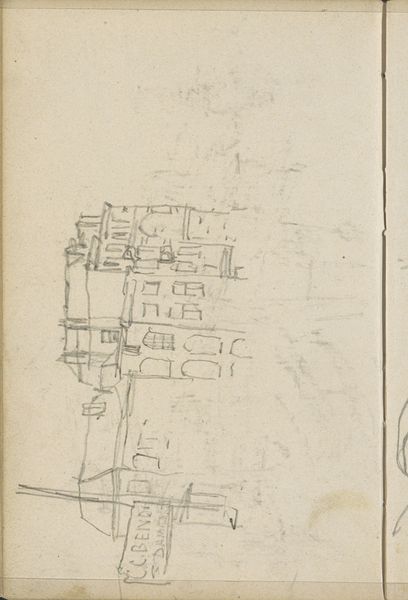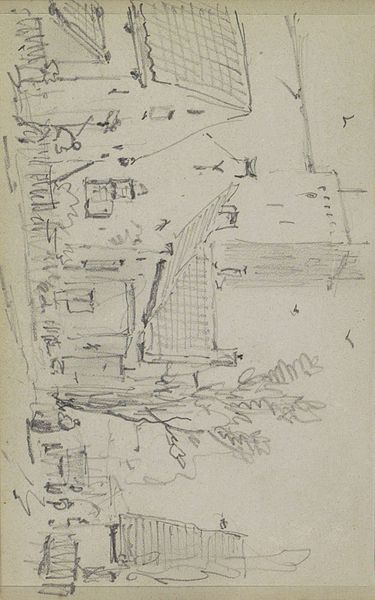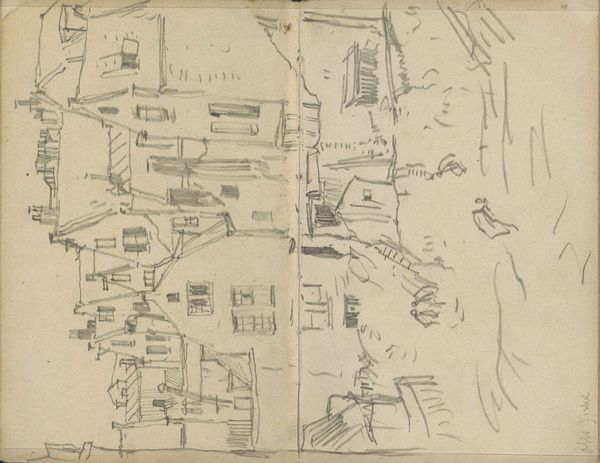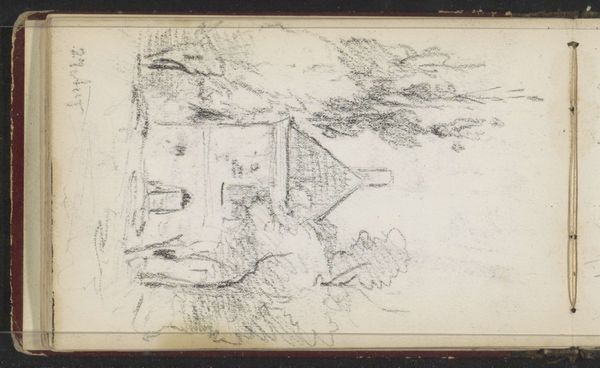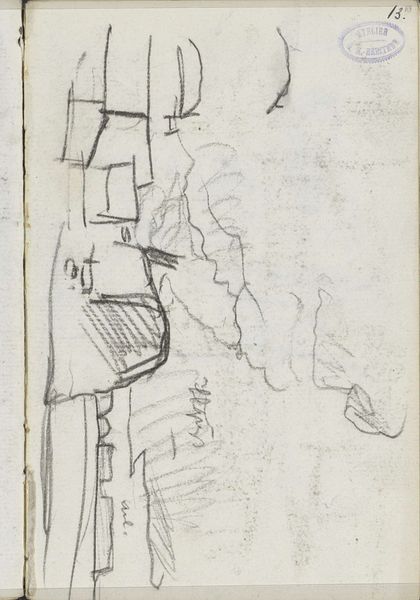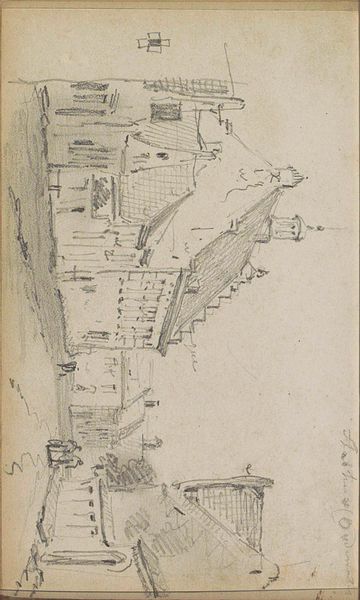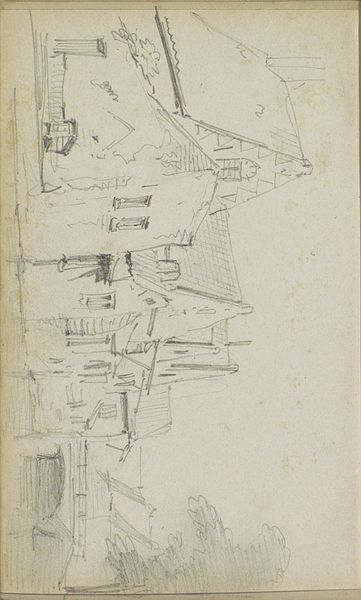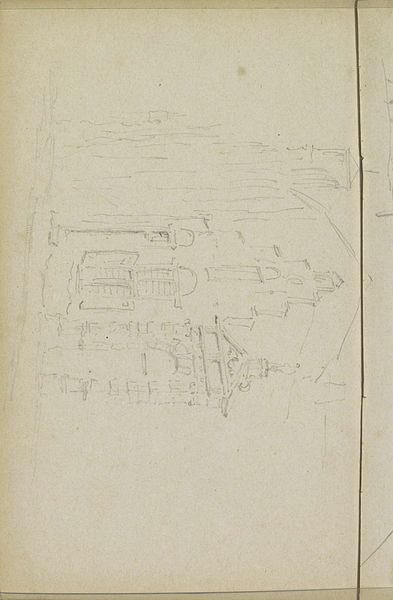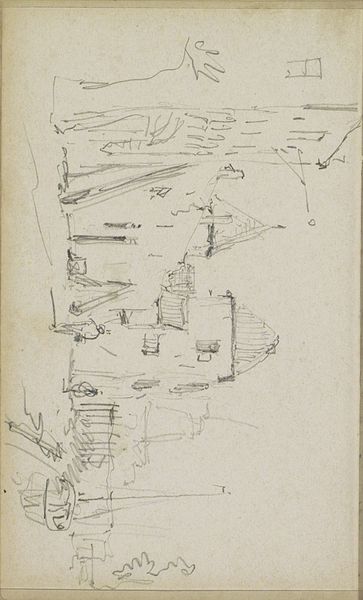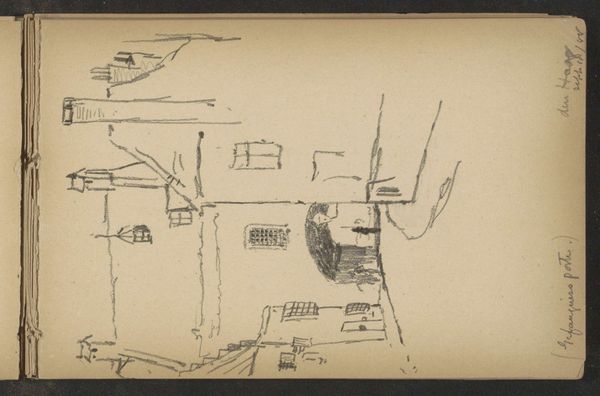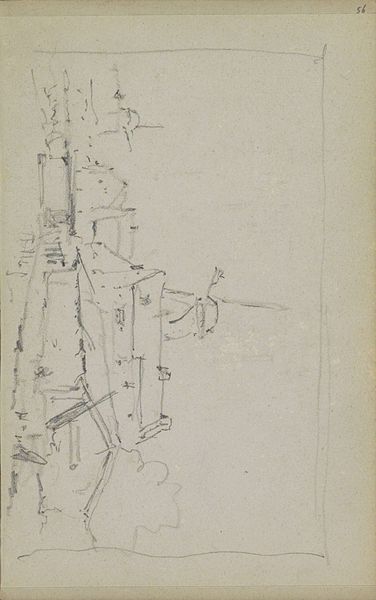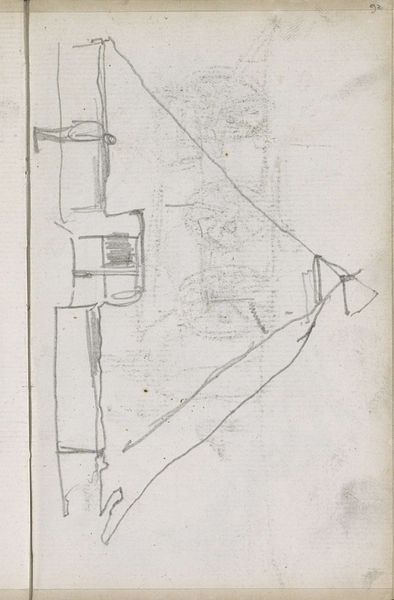
drawing
#
drawing
#
aged paper
#
sketch book
#
personal sketchbook
#
idea generation sketch
#
sketchwork
#
geometric
#
pen-ink sketch
#
pen work
#
sketchbook drawing
#
cityscape
#
storyboard and sketchbook work
#
sketchbook art
Curator: Here we have a sketch, "Uidentificeret kompositionsskitse" – or, "Unidentified Compositional Sketch" – by Niels Larsen Stevns, likely created between 1932 and 1935. Editor: My initial reaction? It's raw, energetic. The quick pen strokes create a sense of urgency and instability, as if the city it depicts is on the verge of collapsing or transforming. Curator: It’s interesting that you use the word “city.” The composition features architectural elements, which may well represent a cityscape, yet it could just as easily be interpreted as a metaphor for social structures. Remember, Stevns lived through immense social and political upheaval in Europe. Editor: Right, the potential socio-political undercurrents are interesting but my focus immediately goes to the materiality, the paper and ink. The artist's hand is so visible here. We see the process of making and unmaking. Was this preparation for a painting, perhaps? Curator: It's more likely a preliminary sketch from a personal sketchbook. The frenetic lines, the almost child-like drawing of figures – these evoke a search for form. I imagine him working quickly, trying to capture a fleeting idea. The repetition of geometric shapes certainly suggests exploration of urban planning. Editor: True, it also makes me think about the commodification of urban space, that linear, almost diagrammatic way of presenting architecture flattens out social realities. The sketch doesn’t shy away from this reduction, this abstraction inherent in architectural renderings. The artist is using cheap materials and fast-made marks to call attention to labor’s essential value. Curator: I would agree to some extent, and I feel it’s imperative to recall the period during which this sketch was likely rendered: a time of global depression when rapid industrialisation reshaped social relations irrevocably. Looking at this work with those forces in mind encourages reflection on its meaning beyond aesthetics, and makes apparent the impact and resonance of intersectional identity throughout visual art. Editor: Definitely. Seeing that process of art making – cheap materials, the artist experimenting… reminds me about the politics of work itself, especially how those shape artistic practices in unexpected ways. Curator: Indeed. And by looking at these material conditions through the lens of gender and class, we can appreciate how Stevns' "Unidentified Compositional Sketch," challenges and transcends traditional modes of representation. Editor: Right, it pulls focus to the actual process instead of idealised depictions.
Comments
No comments
Be the first to comment and join the conversation on the ultimate creative platform.
